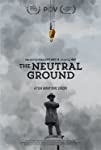Eye For Film >> Movies >> The Neutral Ground (2021) Film Review
The Neutral Ground
Reviewed by: Jennie Kermode

On the 11th of March, 1837 - 26 years before the formal (though not altogether effective) abolition of slavery in the US - a New Orleans newspaper declared the area in the middle of the city's Canal Street to be 'neutral ground', in reference to the way that the street divided white neighbourhoods from the French Quarter where enslaved people were sold. The term stuck even after the cultural division faded, and though it was never entirely serious, citizens developed a fondness for the idea of this space as somewhere that anybody could go and be on an equal footing with others. There was just one problem: it was hard for African Americans to feel equal or welcome when the area was looked down on by four statues of Confederate war heroes - slave owners and champions of an overtly racist regime. It wasn't until 2015 that the city council finally agreed that these should be removed, but making the decision and making it happen turned out to be two very different things.
Writer and comedian CJ Hunt had no idea, when filming that initial council meeting, how much opposition the removal plan would attract. It wasn't just a matter of protests but of contractors refusing to take on the job after apparently receiving threats. For all this opposition to be possible, Hunt reasoned, belief in the false narratives created after the Civil War must remain strong. The ensuing documentary set out to explore that belief, the reasons for its persistence and the wider issues around the rejection of statues connected with racism or imperialism, around the world. It received a special mention from the Albert Maysles Award jury at Tribeca and has an important contribution to make to public discourse.

Though some aspects of the film will mean more to you if you have a New Orleans connection, Hunt strives to ensure that it's accessible to everyone. Exploring the impact of the Civil War on the South begins with reflection on the sheer scale of loss: the numbers of men who died in action and what a similar experience might look like today. How does the remaining population cope after something like that? What do grieving widows tell their children? Not that daddy died to try and keep other people in chains. So we get the fiction about States' rights and the Lost Cause, told for so long that people come to believe it, and the statues play a vital role in that. Now that those who were personally bereaved are all gone, how can the myth be dismantled, and how can white people be brought around to an understanding of how much damage it has done?
Investigating these issues, Hunt has to balance the hunger for insight against the need for personal safety. Having dark skin would make it difficult to interview over racists. In some ways this is positive, however, as it tips the film away from sensationalism and towards a focus on the sort of arguments that can seem nuanced and reasonable if one doesn't understand the fundamental fragility of the structures upon which they are built. In so doing, it gives viewers a lot more to reflect on, whether they're hearing those arguments dismantled for the first time or thinking about how they might more effectively communicate the issues to others. Either way, it's hard not to feel nervous when Hunt is attending a Civil War re-enactment which has some rather unsavoury participants.
Alongside this central narrative issue, a selection of other talking points emerge. Is there a danger that, in taking down statue, we stop talking about uncomfortable aspects of history or forget the, altogether? if we choose to store the statues somewhere else, what is the best way to do so? How do we reconcile the idea that some of them are substitute grave markers for thousands of combatants whose bodies were never recovered? Viewers alert to the number of enslaved people who were buried in unmarked graves or simply dumped in rivers may feel limited sympathy here, but Hunt is focused on the need to work towards mutual understanding, which prompts another question: why has the US been so bad at acknowledging, discussing and facing up to the horrors of its past?
There's a heartbreaking postscript to this film which emphasises the need for such a reckoning, reminding us of how the under-examined past can come crashing into the present. There's also footage, destined to horrify or thrill, of statues being torn from their plinths around the world. On the day of writing this review, two more fell in Winnipeg, a response to the discovery of the unmarked graves of indigenous children. This issue isn't going away, and Hunt's film could not be more timely.
Reviewed on: 02 Jul 2021
















